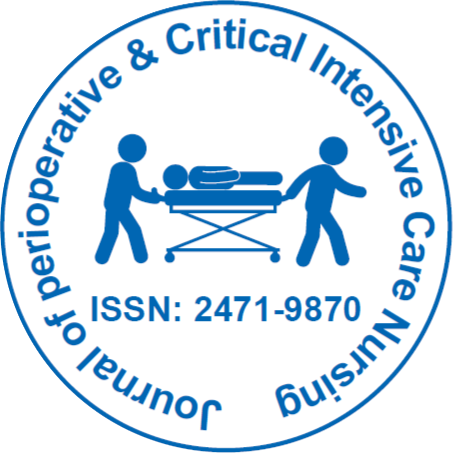
Journal of Perioperative & Critical Intensive Care Nursing
Open Access
ISSN: 2471-9870

ISSN: 2471-9870
Editorial - (2021)Volume 7, Issue 4
The number of older persons requiring surgical procedures has increased dramatically over the last 20 years and will continue to rise as the population ages. The perioperative care of geriatric patients presents unique challenges not seen in younger patients. Multiple comorbidities, physical and cognitive deficits, and diminished cardiac, pulmonary, and renal reserve are more common in people over 70. These variables put elderly patients at risk for perioperative problems and a longer stay in the hospital, which raises the risk of iatrogenesis, nosocomial infections, and perioperative mortality. Current perioperative assessment and care recommendations for older patients are based on data from mostly younger cohorts. Given the scarcity of evidence-based guidelines for this patient group, it's critical to understand the pathophysiologic changes that occur in the elderly to lower their perioperative risk.
As previously stated, elderly people are more likely to experience cardiac and non-cardiac problems after major surgery. Myocardial ischemia, arrhythmias, and heart failure are all common adverse cardiac events. Multiple cardiac risk factors, unstable coronary artery disease, symptomatic heart failure, uncontrolled arrhythmias, severe valvular heart disease, and high-risk surgical procedures, in addition to advancing age, are linked to an increased risk of perioperative cardiac problems. Delirium, cognitive impairment, hospital-acquired infections, respiratory insufficiency, venous thromboembolic disease, acute renal injury, and pressure ulcers are also common non-cardiac consequences (especially in patients with prolonged hospitalization). Impaired thermoregulatory function is also linked to ageing. Anesthetic-induced suppression of thermoregulatory reflexes may worsen
these alterations, resulting in moderate hypothermia, which is frequent in older persons. Urinary tract infections, respiratory insufficiency, hospital-acquired pneumonia, and acute renal injury are all typical postoperative consequences. The most effective treatments include limiting the use of urine catheters, maintaining proper pulmonary toilet, taking care against pathogen transmission (particularly hand hygiene), decreasing the use of nephrotoxins, and providing enough hydration. Over the last eight decades, perioperative care for the elderly has changed dramatically. With the substantial shift in the population toward the elderly brought on by the ageing of the 1950s baby boom, this has become increasingly true. The fastest-growing age group in the United States is 65 and over, which is predicted to account for 20% of the population by 2025. (1) As people get older, their physiologic reserve in all organ systems decreases, which increases the risk of perioperative problems. (2) Patients over the age of 65 who have several comorbidities, complicated prescription regimens, functional limitations, cognitive impairment, and/or frailty are more likely to experience perioperative morbidity and iatrogenic consequences. (3) The key drivers of perioperative risk, rather than age alone, are functional status and the existence of concurrent disorders; consequently, age should not be used as an exclusion factor for surgery. (4) A multidisciplinary approach involving the anesthesiologist, surgeon, primary care physician, and, in some situations, a geriatrician, is often required for optimal perioperative care. (5) Current ACC/AHA perioperative assessment criteria for individuals undergoing non-cardiac surgery are similar in older and younger patients. In the absence of unstable cardiac problems, testing is not suggested unless the results will change perioperative therapy or the patient is at high surgical risk due to three or more clinical risk factors.
Citation: Multach MD (2021) Perioperative Care Assessment in Elder Patients. J Perioper Crit Intensive Care Nurs 7: 177. doi:10.35248/2471- 9870.21.7.177
Received: 07-Jun-2021 Accepted: 21-Jun-2021 Published: 28-Jun-2021 , DOI: 10.35248/2471-9870.21.7.177
Copyright: © 2021 Multach MD. This is an open-access article distributed under the terms of the Creative Commons Attribution License, which permits unrestricted use, distribution, and reproduction in any medium, provided the original author and source are credited.